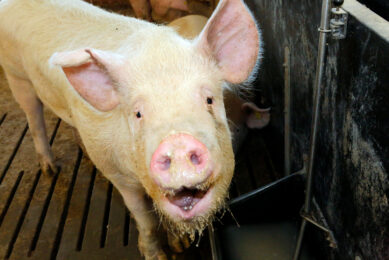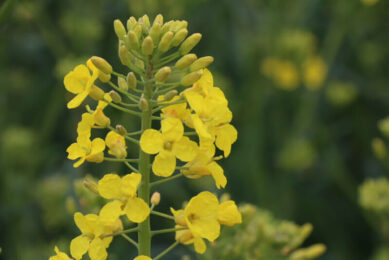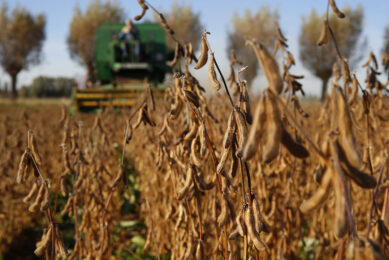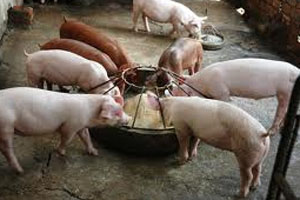Increasing growth performance and carcass quality with high oleic soybean oil
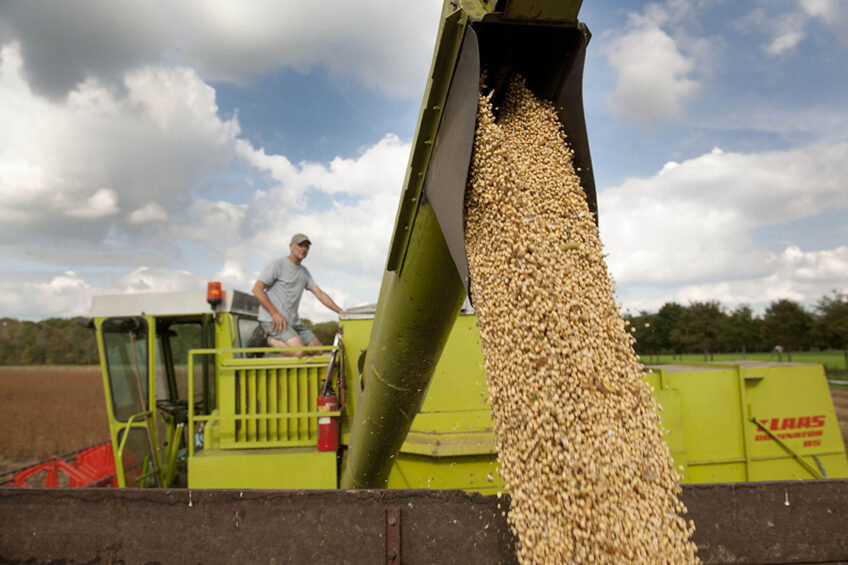
It is common for pigs in North America and beyond to receive a source of fat or oil in the diet. New research at the University of Illinois shows that high oleic soybean oil (HOSO) as a fat source offers good potential to increase growth performance or carcass quality.
This team, led by Dr Baily Harsh and includes Katelyn Gaffield, Ryan and Anna Dilger and Dustin Boler, published two studies, both supported by the United Soybean Board.
There is not much research on the effects of high-oleic soybean oil on pigs. It is a premium product at this point. Most soybean oil available on the market is conventional (lower in oleic fatty acids).
Fat differences
In the US, pigs often receive distillers dried grains with solubles (DDGS) as a fat source. However, DDGS mostly contains polyunsaturated fats. This can reduce pig carcass fat quality and also complicate processing of pork bellies and bacon.
But HOSO, as the scientists note in the Journal of Animal Science, contains an increased proportion of oleic acid, a monounsaturated fatty acid. Like high-oleic canola oil, this oil is stable for use in food processing, and more ‘heart healthy’ than other oils without as many unsaturated fatty acids.
Both canola growers and soybean growers are keen to demonstrate that canola and soybean oils and meals can be used in livestock production – and in this case, the HOSO can provide benefits in pig production.
Growth efficiency and more
This study found that pigs fed the highest level of HOSO grew more efficiently. They were also heavier than those fed the diet containing DDGS.
However, pigs fed 6% HOSO were also fatter and yielded a reduced percentage of boneless meat cuts than those fed DDGS.
Close to 300 pigs were placed in groups that received 4 diets that differed in their source of fat for the last 14 weeks before slaughter. One diet contained 25% DDGS, with the other three had graded levels of HOSO (2%, 4%, or 6%).
Bottom of form
Average daily feed intake decreased with pigs fed diets containing HOSO. The researchers expected this because as more energy is added to a diet, pigs usually consume less.
However, as explained in the University of Illinois release, the pigs in the study “were more efficient in converting that diet into pounds of gain,” said Harsh.
Carcass differences
Harsh and her colleagues also found minimal differences in primal weights across the diets, but the overall trend showed greater fat thickness and reductions in fat-free lean as the HOSO percentage went up.
As HOSO moved from 2 to 6%, the pigs grew more efficiently but were a little bit fatter and their carcass cutability dropped just a little bit, but not enough that we would be too concerned,” Harsh said.
Bacon and belly quality
Relating to the second study, Harsh explained that both bacon and belly quality is relatively dependent on a pig’s diet.
That is, if pigs consume a standard DDGS-containing diet which has more polyunsaturated fatty acids, those pork bellies will also be more unsaturated.
As expected, bellies from HOSO-fed pigs were thicker and firmer, with a higher proportion of monounsaturated fatty acids compared with DDGS-fed pigs.
Loin chops were just as tender, juicy and flavourful in the HOSO-fed pigs as pigs fed the industry standard supplement.
Harsh added that “we usually think about unsaturated fats as being very soft or liquid at room temperature, so you can have problems with softness of the bellies that can make them hard to slice. The loin is another primary outcome, so we needed to make sure we didn’t have any major impacts on the loin either.”
There was little impact on palatability, oxidation or belly and loin quality in pigs fed HOSO compared with the DDGS diet.



